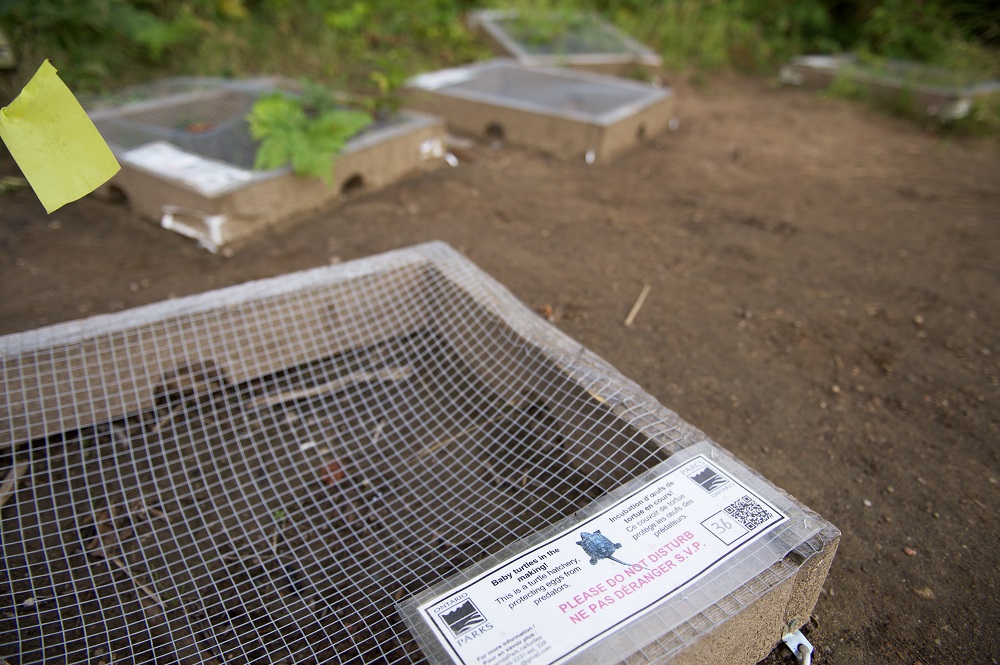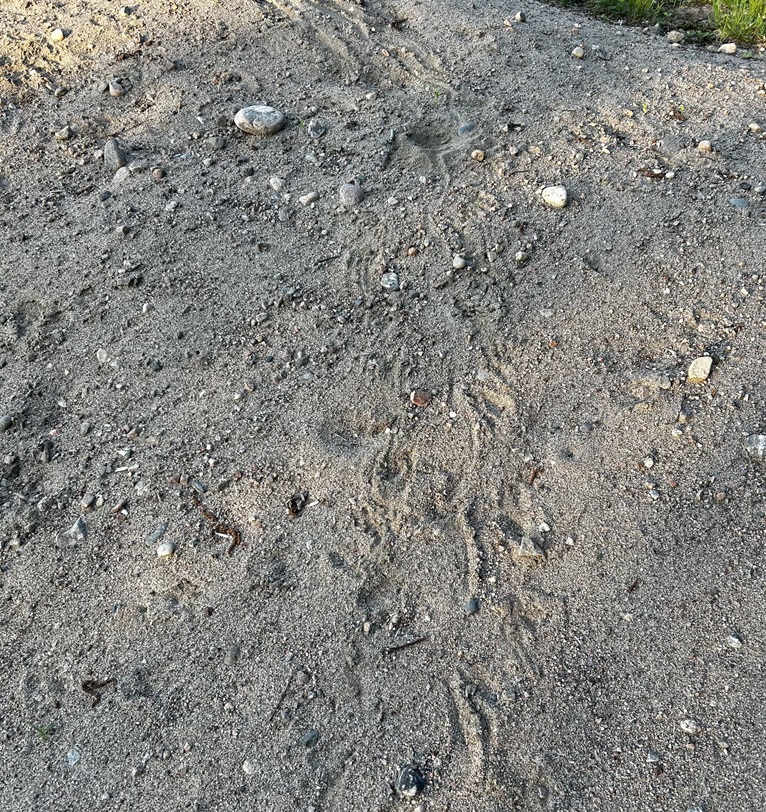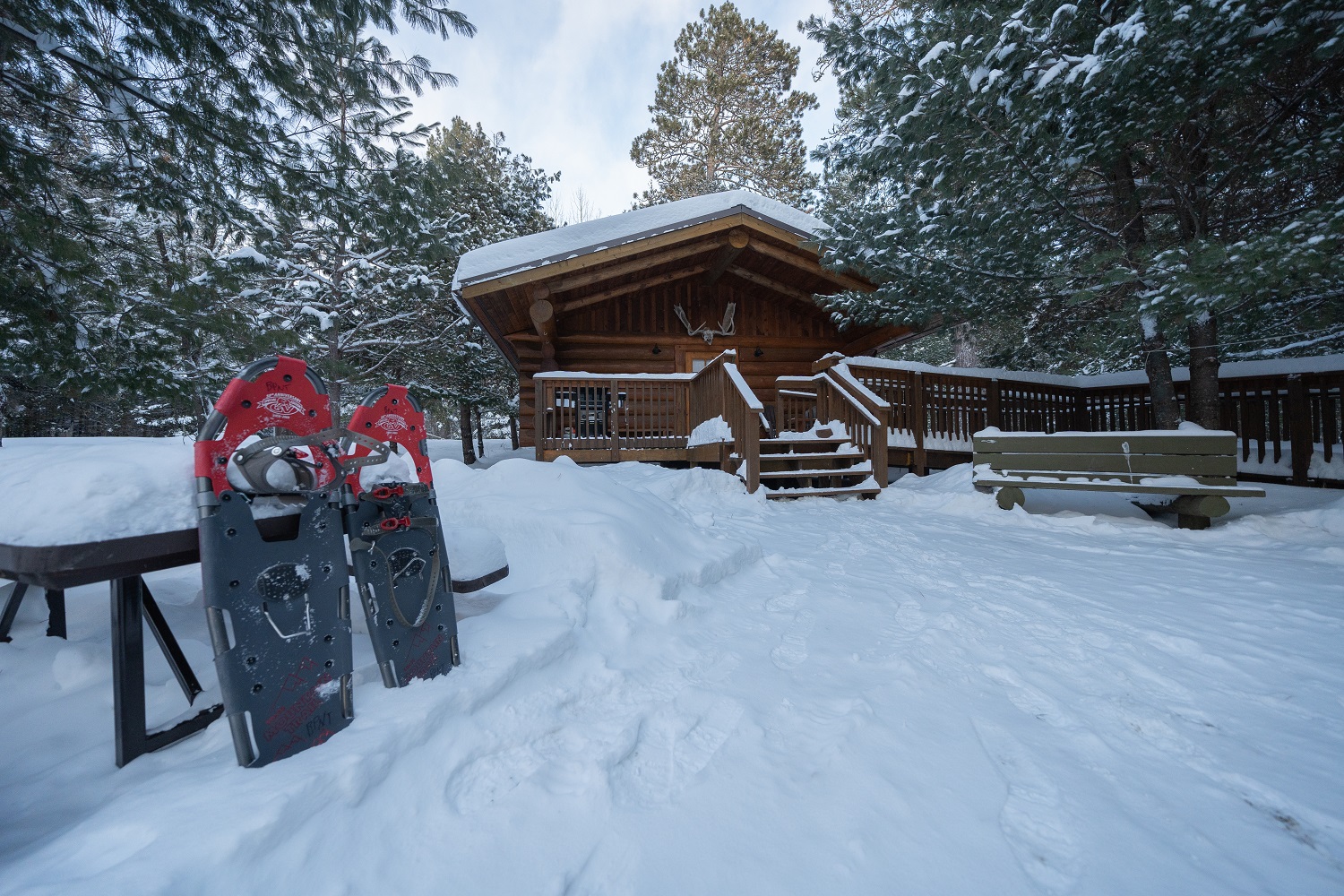Today’s post comes from Rose Brandt, a Discovery student at Samuel de Champlain Provincial Park.
If you’ve been to Bagwa Day-Use Beach at Samuel de Champlain, you might’ve wondered what that seemingly random pile of sand beside the beach is all about.
That would be our artificial turtle nesting site!

Turtles have been nesting unaided for millions of years, but due to human impact, they are having a harder time persisting on their own.
This turtle nesting site is an attempt to mediate some of this impact and provide a safe place to nest.
~
Finding just the right spot
Unlike many birds who build nests in trees, turtles dig holes in the ground.
Before they lay their eggs, they have a few requirements: a sand or gravel substrate that holds heat well, full sun exposure, a nearby waterbody, and good drainage.
These are important for both the digging process and the survival of the hatchling turtles.

The heat from the sun allows the hatchlings to grow in the egg. In fact, temperature determines the sex of the turtle! Long and hot summers create more females and cool summers lead to more males.
The proximity to a body of water helps provide a habitat right away for the new hatchlings.
These are all things that we had to consider when building a turtle nesting site.
~
Staying safe
Even if all of these requirements are fulfilled, the nests are still vulnerable to predators like raccoons.
Because of this, staff keep a keen eye on our turtle nesting site throughout nesting season.
When we see a turtle laying eggs or evidence that one has laid, we cover it up with a nest protector like the one below to stop predators from snatching the eggs.

Turtles also face major threats from roads. Turtle nesting sites can be helpful ways to stop the need for turtles to cross a road to find a suitable nesting spot.
With a decline in suitable nesting habitats that aren’t a roadside or a public beach, turtle nesting sites provide safe and “turtle only” nesting havens.
~
Getting comfortable
The one challenge with turtle nesting sites is that turtles have high site fidelity, meaning that they return to the same places time and time again to lay.
This means that it might be a couple of seasons before sites are filled with our shelled friends. However, here at Samuel de Champlain, we have already seen signs of use after only three years!

We have found turtle tracks and test pits, which turtles create when testing spots to lay their nest. This lets us know that turtles are, in fact, using this site and it’s already having a positive impact.
Once the turtles get used to the site, they will return again and again!
Have you seen a turtle on or near this nesting site? Please do not disturb it and notify park staff!
Want to help protect turtles like the ones found at Samuel de Champlain? Donate to the Turtle Protection Project.


